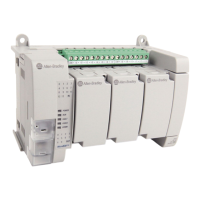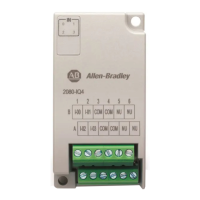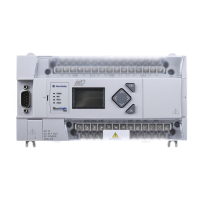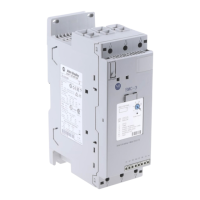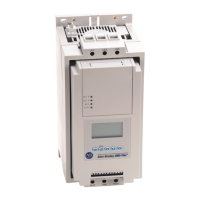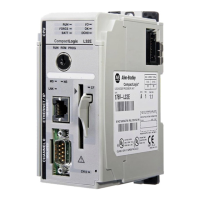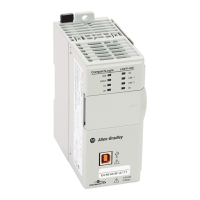Rockwell Automation Publication 2080-UM002M-EN-E - April 2022 335
Appendix G Connect to Networks using DF1
Define the parameters shown in Table 78 when configuring a Micro800
controller as a master station using message-based communication mode to
talk to slave stations.
Table 78 - Configure a Micro800 Controller as a Master Using Message-based
Communication Mode
Parameter Selections
Baud Rate
Select a communication rate that all devices in your system support. Configure all devices
in the system for the same communication rate.
Parity
Parity provides additional message packet error detection. To implement even parity
checking, choose Even. To implement no parity checking, choose None.
Node Address
A node address identifies the controller on the DF1 half-duplex link. Each station on a link
must have a unique address. Choose an address between 0
10
and 254
10.
Node address 255
10
is the broadcast address, and cannot be selected as a station’s individual address.
Media
Select the communication media for the DF1 protocol:
•RS-232
• RS-485 (only available when DF1 mode is Half-Duplex)
Control Line
This parameter defines the mode in which the driver operates. Choose a method
appropriate for your system’s configuration:
• If you are not using a modem, choose NO HANDSHAKE.
• If the master modem is full duplex, choose FULL-DUPLEX (RTS ALWAYS ON).
• If all the modems in the system are half-duplex, choose HALF-DUPLEX WITHOUT
CONTINUOUS CARRIER (RTS/CTS).
See Modem Control Line Operation
on page 328 for descriptions of control line operation
settings.
Error Detection
With this selection, you choose the how the controller checks the accuracy of each DF1
packet transmission.
BCC: This algorithm provides a medium level of data security. It cannot detect:
– transposition of bytes during transmission of a packet
– the insertion or deletion of data values of zero within a packet
CRC: This algorithm provides a higher level of data security.
Select an error detection method that all devices in your configuration can use.
When possible, choose CRC.
Polling Mode
If you want to:
• accept unsolicited messages from slave stations, choose MESSAGE BASED (ALLOW SLAVES
TO INITIATE MESSAGES)
Slave station-initiated messages are acknowledged and processed after all master
station-initiated (solicited) messages.
Note: Slave stations can only send messages when they are polled. If the message-based
master station never sends a slave station a message, the master station will never send
the slave station a poll. Therefore, to regularly obtain a slave station-initiated message
from a slave station, you should choose to use standard communication mode instead.
• ignore unsolicited messages from slave stations, choose MESSAGE BASED (DO NOT ALLOW
SLAVES TO INITIATE MESSAGES)
Slave station-initiated messages are acknowledged and discarded. The master station
acknowledges the slave station-initiated message so that the slave station removes the
message from its transmit queue, which allows the next packet slated for transmission
into the transmit queue.
Duplicate Packet
Detect
Duplicate Detect lets the controller detect if it has received a message that is a duplicate of
its most recent message from another station. If you choose duplicate detect, the controller
will acknowledge (ACK) the message but will not act on it since it has already performed the
message’s task when it received the command from the first message.
If you want to detect duplicate packets and discard them, check this parameter. If you want
to accept duplicate packets and execute them, leave this parameter unchecked.
Reply Message Wait
Timeout
Defines the amount of time, in 20 millisecond increments, that the master station will wait
after receiving an ACK (to a master-initiated message) before polling the slave station for a
reply.
Choose a time that is, at minimum, equal to the longest time that a slave station needs to
format a reply packet. This would typically be the maximum scan time of the slave station.
ACK Timeout
The amount of time, in 20 millisecond increments, that you want the controller to wait for an
acknowledgment to the message it has sent before the controller retries the message or the
message errors out. This timeout value is also used for the poll response timeout. See
See Minimum DF1 Half-Duplex Master ACK Timeout
on page 332 for recommendations to
minimize this value.
RTS Off Delay
Defines the amount of time, in 20 millisecond increments, that elapses between the end of
the message transmission and the de-assertion of the RTS signal. This time delay is a buffer
to make sure that the modem has transmitted the message but should normally be left at
zero. See RTS Send Delay and RTS Off Delay on page 330 for further guidelines for setting
this parameter.
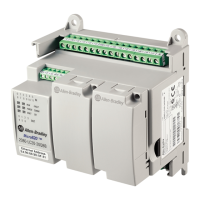
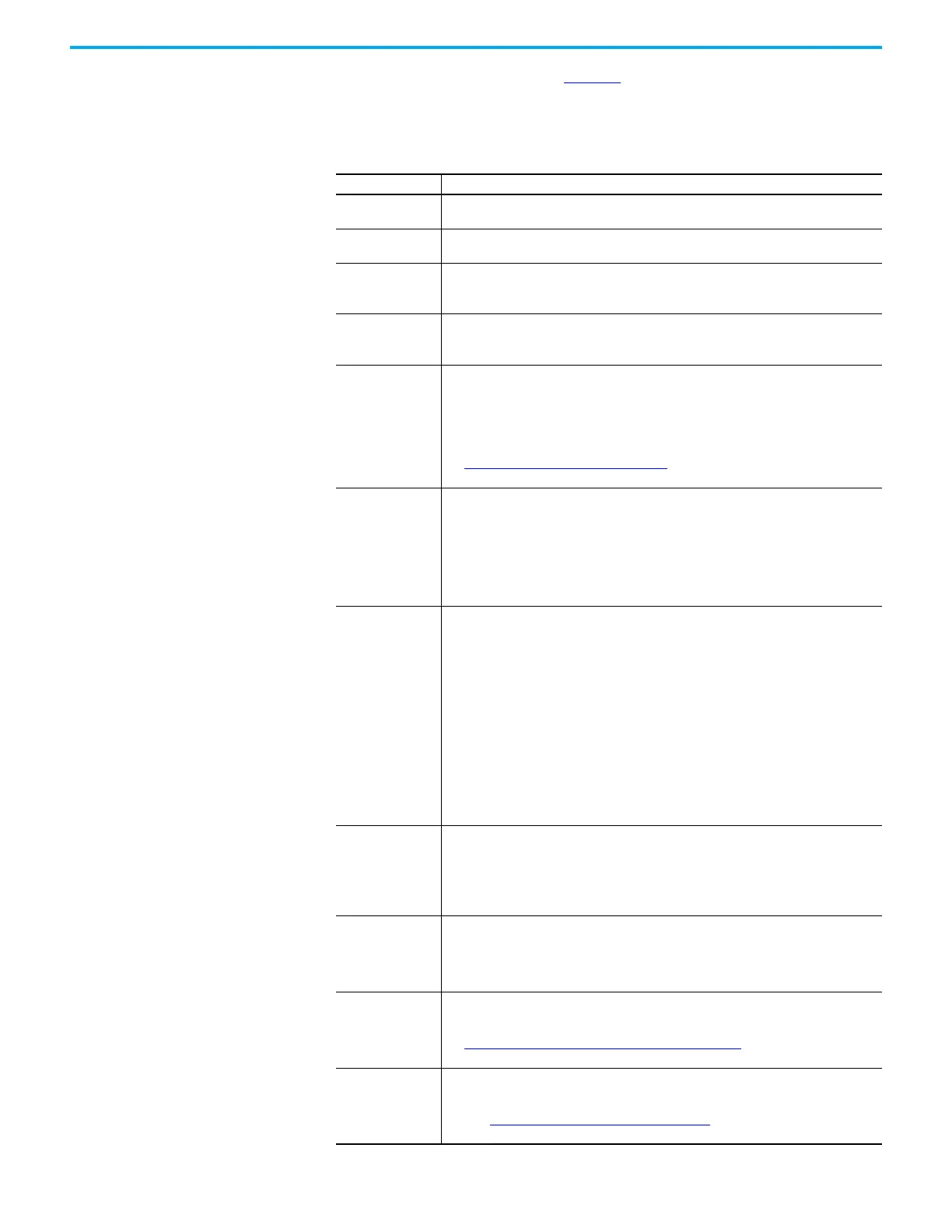